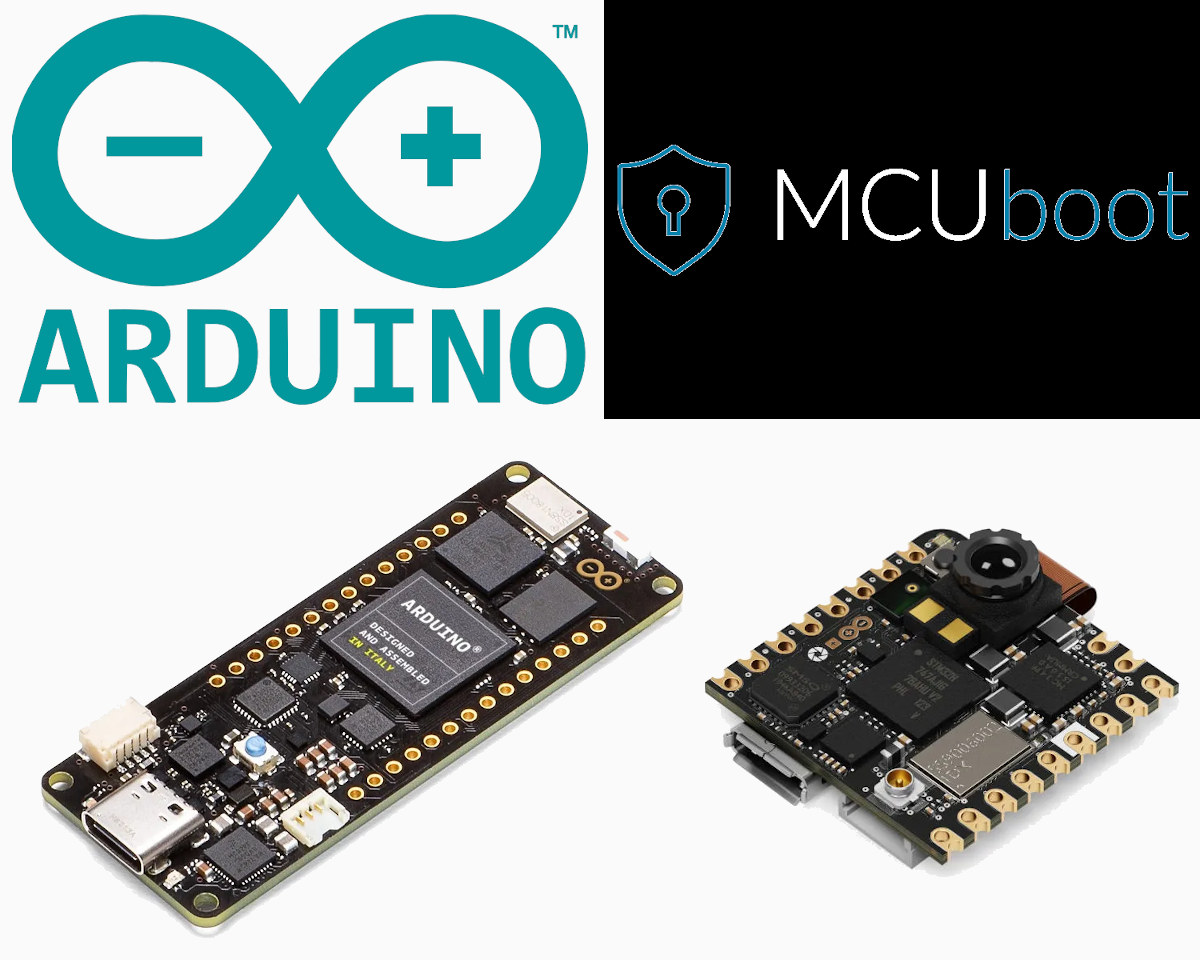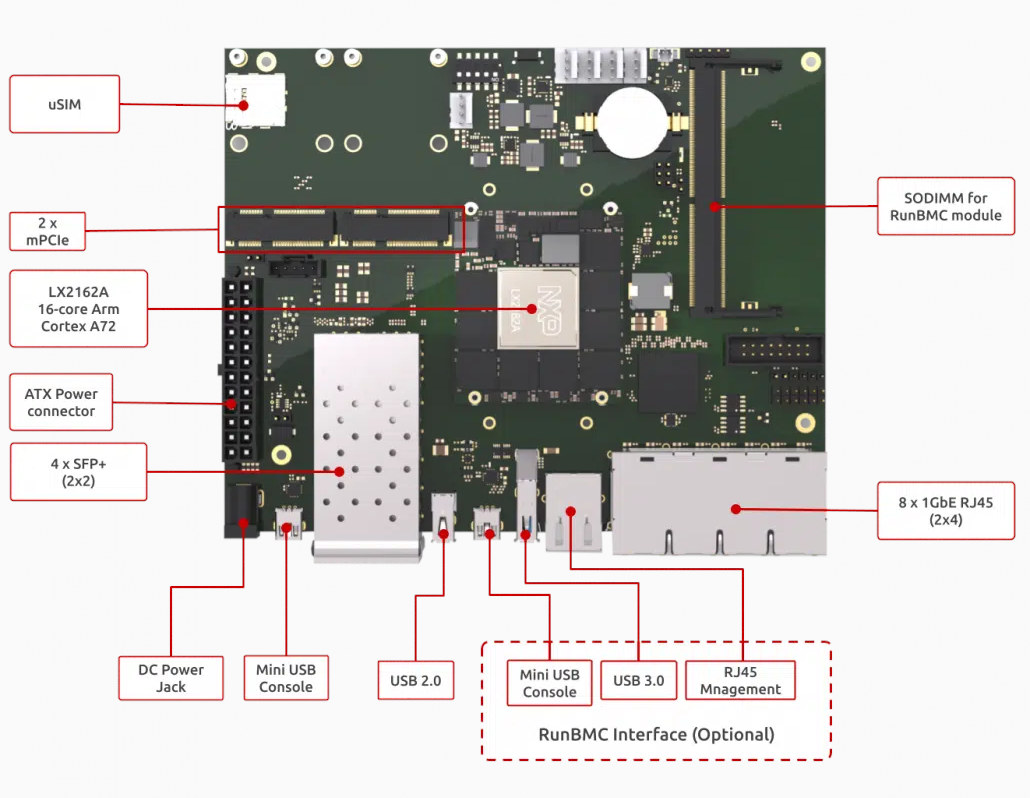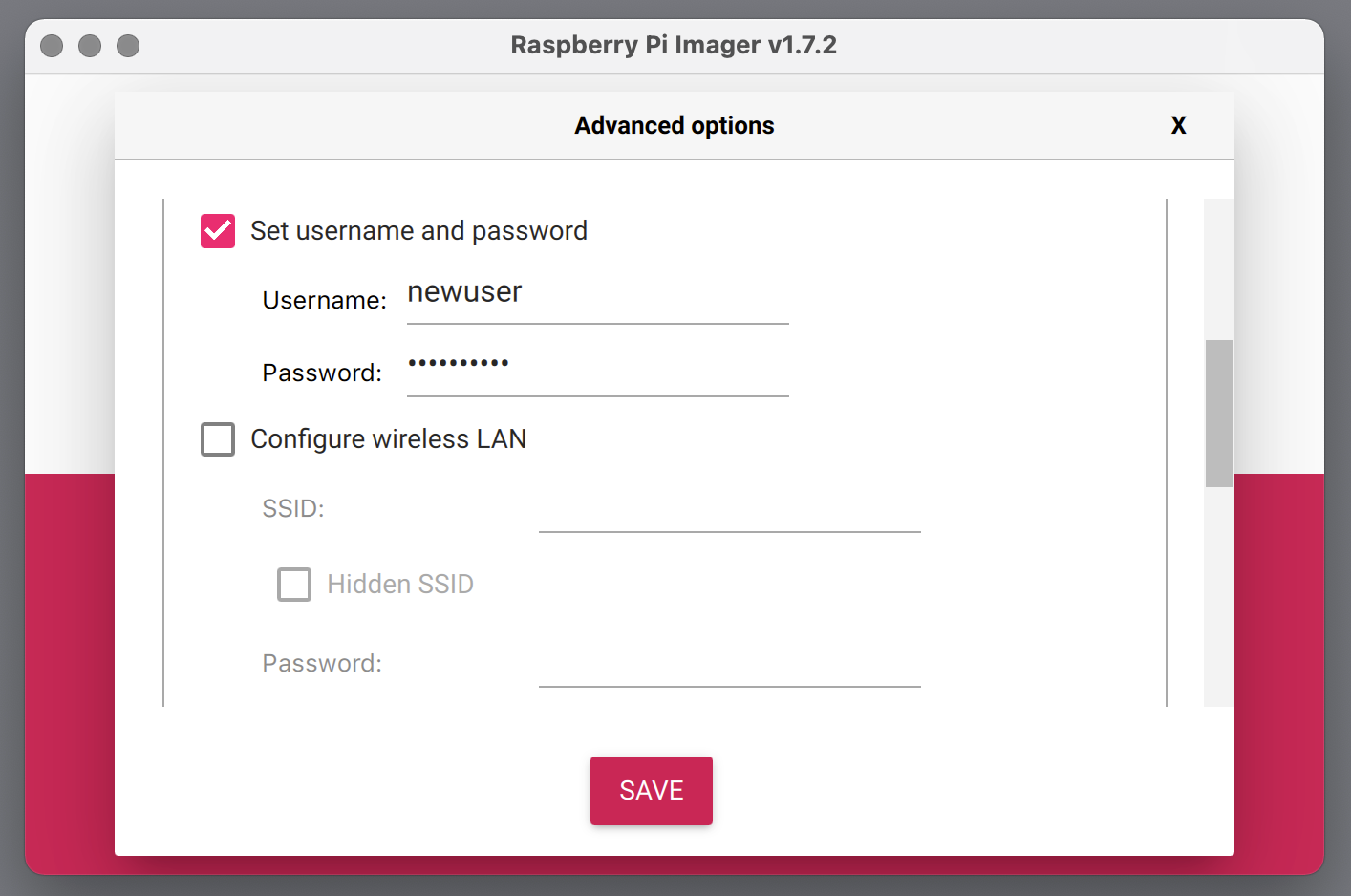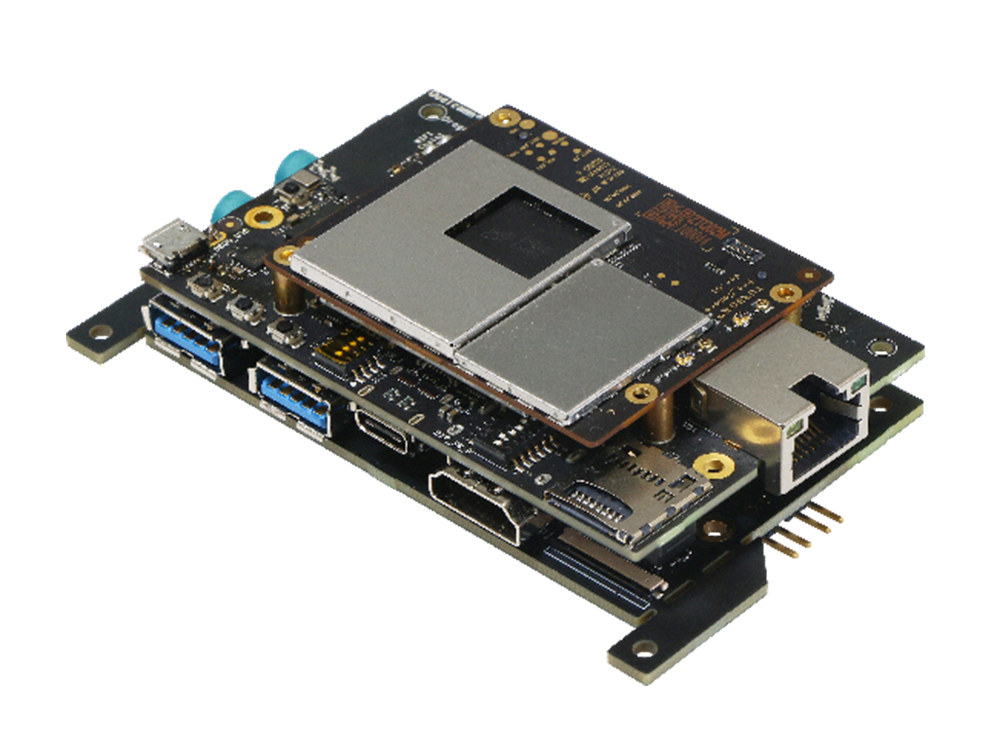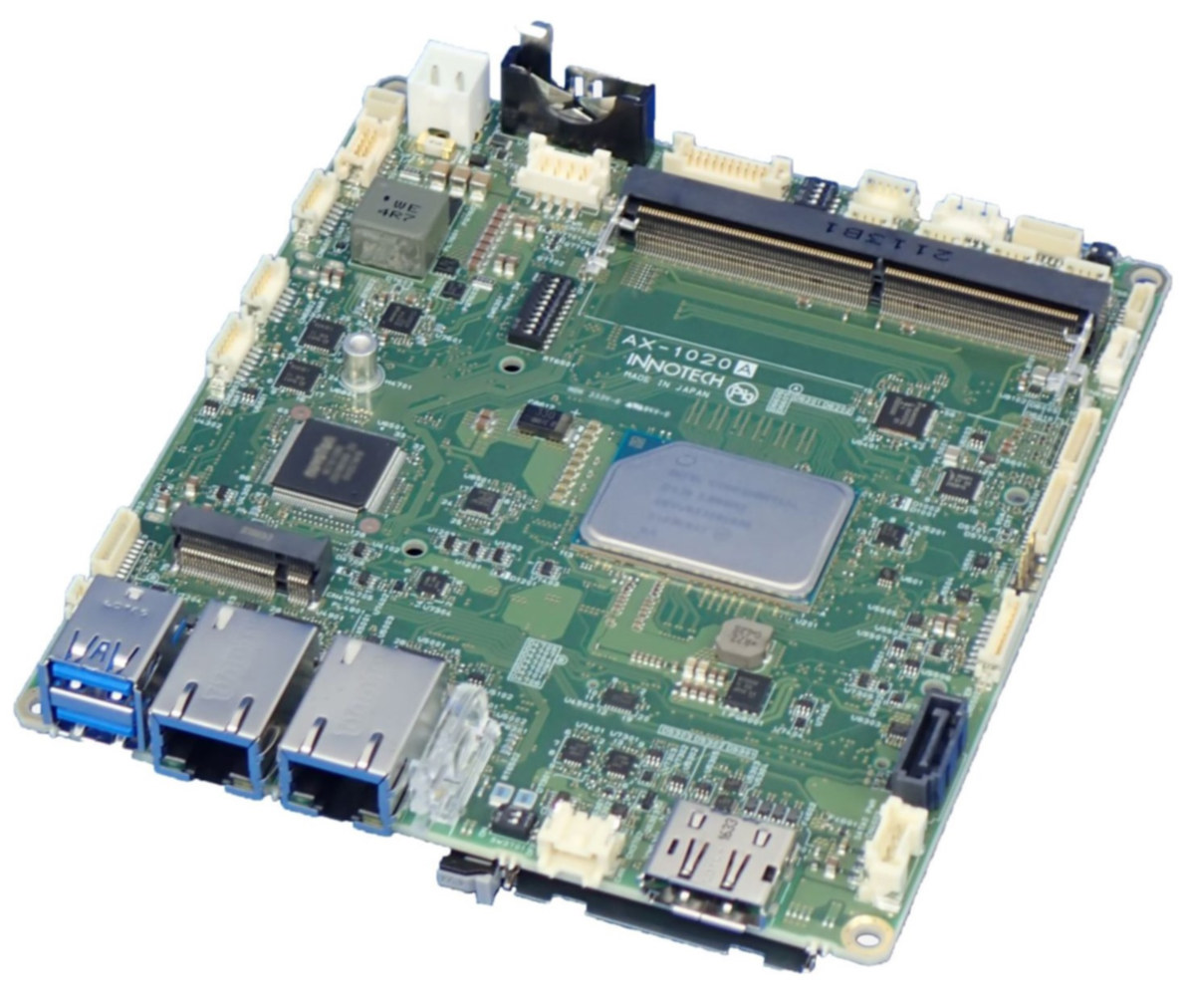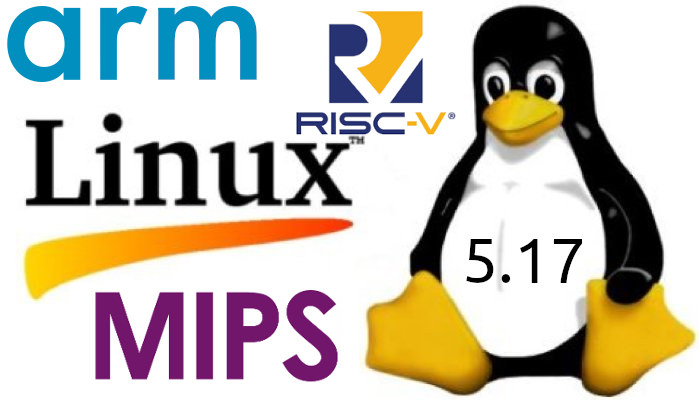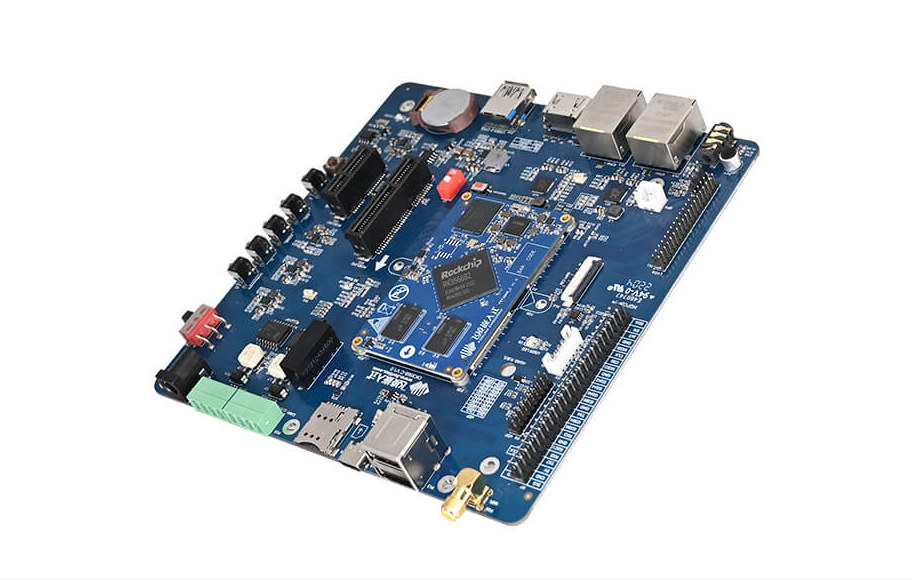Arduino has released a new bootloader based on MCUBoot to increase the range of features and firmware safety of Arduino products, with the first release targetting STM32H7 based Arduino Portenta and Nicla Vision boards from the Arduino Pro family. The release focuses on Arduino Mbed OS-based boards, but MCUboot is OS agnostic, and should also work with Zephyr, Nuttx, and Apache mynewt. The company has also made sure that the transition is easy and reused the existing OTA firmware upgrade process in place on Arduino boards. MCUboot Arduino highlights: Signed and encrypted updates – MCUboot has support for encrypting/decrypting images on-the-fly while upgrading. It will also check if the computed signature is matching the one embedded in the image before booting a sketch. Confirm or revert updates – After an update, the new Sketch can update the content of the flash at runtime to mark itself as OK. If everything […]
SolidRun launches 16-core LX2162A LX2-Lite SOM and ClearFog LX2-Lite development board
SolidRun has launched the LX2-Lite SOM based on NXP Layerscape LX2-Lite SoC with up to 16 Arm Cortex-A72 cores, together with ClearFog LX2-Lite development platform equipped with two SFP28 cages up to 25Gbps each, two SFP+ cage up to 10Gbps each, and eight Gigabit Ethernet RJ45 ports for networking applications. With a footprint measuring just 58 x 48mm, or about 25% the size of a standard COM Express 7 module, the company claims the LX2-Lite Mini SOM, based on LX2162A, is the smallest 16-core SOM platform in the world, and the module and development board target high-performance SD-WAN, network security, and industrial control solutions. SolidRun LX2-Lite SOM Specifications: SoC (one of the other) NXP Layerscape LX2082A with 8x Cortex A72 cores @ 2.0 GHz NXP Layerscape LX2122A with 12x Cortex A72 cores @ 2.0 GHz NXP Layerscape LX2162A with 16x Cortex A72 cores @ 2.0 GHz System Memory – Up […]
Raspberry Pi OS removes default “Pi” username, adds experimental support for Wayland
The Raspberry Pi Foundation has just released a new version of Raspberry Pi OS that removes the default username (pi) for security reasons, adds experimental support for Wayland, and lets people configure their Raspberry Pi with Bluetooth keyboard and mouse. Default username no more The most significant change in the new Raspberry Pi OS is the removal of the default “pi” user as several countries have legislation against default credentials for security reasons. That includes the Product Security and Telecommunications Infrastructure Bill (PSTI) in the UK, and California’s SB-327 IoT devices security law. Those laws mostly target default passwords, but removing a default username can be useful too to prevent force brute attacks. One consequence of removing the default username is that you won’t be able to skip the wizard in both the Desktop and Lite versions of Raspberry Pi OS since a new user needs to be created first. […]
TurboX C7230 SOM integrates Qualcomm QCS7230 SoC for WiFi 6 & 5G 8K AI cameras
Thundercomm TurboX C7230 SOM is a system-on-module powered by the just-announced Qualcomm QCS7230 hexa-core processor with 7 TOPS of AI performance and designed for WiFi 6 and 5G connected smart cameras with up to 8K resolution. The TurboX C7230 module comes with 8GB LPDDR5 (PoP), 128GB UFS storage, six MIPI CSI camera interfaces, two MIPI DSI display interfaces, as well as a QCA6391 chip for WiFi 6 and Bluetooth 5.1 connectivity, plus optional 5G cellular connectivity through an optional Snapdragon X55 module that connects to the TurboX C7230 development kit. TurboX C7230 SOM system-on-module specifications: SoC – Qualcomm Snapdragon QCS7230 hexa-core processor with 1x Kryo 585 Gold (Cortex-A77) core @ 2.84 GHz, 3x Kryo 585 Gold cores @ 2.4 GHz, and two Kryo 585 Silver (Cortex-A55) cores @ 1.8 GHz, 4 MB L3 cache, Adreno 650 GPU, Adreno 665 VPU, Adreno 995 DPU, Hexagon DSP with dual-HVX, and Spectra 480 […]
INNOTECH AX-1020 Atom x6000E Elkhart Lake SBC targets fanless equipment
Japan-based INNOTECH has announced the AX-1020 SBC based on Intel Atom x6000E Elkhart Lake processor designed for fanless industrial equipment, medical equipment, surveillance/security, and transportation applications. The board supports up to 16GB of RAM, SATA & NVMe storage, and is equipped with three display interfaces, two Gigabit Ethernet ports, six USB3.0/2.0 interfaces, one RS-485/422, and four RS-232C serial interfaces. INNOTECH AX-1020 specifications: Choice of Atom x6000E Elkhart Lake SoC Intel Atom x6425E quad-core processor @ 2.00 GHz / 3.0 GHz with 32 EU UHD graphics; 12W TDP Intel Atom x6413E quad-core processor @ 1.50 GHz / 3.0 GHz with 16 EU UHD graphics; 9W TDP Intel Atom x6211E dual-core processor @ 1.30 GHz / 3.0 GHz with 16 EU UHD graphics; 6W TDP System Memory – 4GB to 16GB DDR4 SO-DIMM (The company tells customers to contact them first when using 8GB or 16GB RAM) Storage – 1x SATA port, […]
Linux 5.17 release – Main changes, Arm, RISC-V, and MIPS architectures
Linus Torvalds has just released Linux 5.17: So we had an extra week of at the end of this release cycle, and I’m happy to report that it was very calm indeed. We could probably have skipped it with not a lot of downside, but we did get a few last-minute reverts and fixes in and avoid some brown-paper bugs that would otherwise have been stable fodder, so it’s all good. And that calm last week can very much be seen from the appended shortlog – there really aren’t a lot of commits in here, and it’s all pretty small. Most of it is in drivers (net, usb, drm), with some core networking, and some tooling updates too. It really is small enough that you can just scroll through the details below, and the one-liner summaries will give a good flavor of what happened last week. Of course, this means […]
Gas pumps happen to be about as insecure as your typical router
Around 400 gallons of gas were stolen from a gas station a few days ago by using a special remote to put it in “dispense mode” and get the gasoline for free. It is not an isolated incident and over the years gas pumps have been hacked using different methods, with some running embedded Linux and connected to the Internet just like a router. We previously noted devices connected o the internet like IP cameras and routers were often not secure since most were configured with default credentials (username/password). I went backpacking a few years ago, and each time I stayed somewhere I tried to log in to the router web interface using the infamous admin/admin, and it worked about 80% of the time. In 2016, I also noticed that changing the default credentials may not help, as the telnet port of my modem router was opened to the outside […]
OK3568-C SBC provides dual GbE, WiFi 5, 4G/5G connectivity, multiple display interfaces
Taking a break from the recent RK3588 news, let’s check out a board based on Rockchip RK3568 quad-core Arm Cortex-A55 processor with the Forlinx OK3568-C single board computer equipped with up to 8GB RAM and 64 GB storage. The board is comprised of the company’s FET3568-C system-on-module and OK3568-C carrier board offering multiple display interfaces, plenty of connectivity options with dual Gigabit Ethernet, WiFI 5, Bluetooth 5.0, as well as optional 4G or 5G cellular connectivity, and PCIe slots. OK3568-C specifications: FET3568-C SoM SoC – Rockchip RK3568 quad-core Cortex-A55 processor @ up to 2.0 GHz with Mali-G52-2EE GPU supporting OpenGL ES 1.1, 2.0, 3.2, Vulkan 1.0,1.1, OpenCL 2.0, 1 TOPS NPU, 4K H.264, H.265, VP9 VPU System Memory – 2GB (default), 4GB, or /8GB DDR4 Storage – 16GB eMMC flash 4x 80-pin board-to-board connectors with I/Os and power signals Supply Voltage – DC5V Dimensions – 70 x 45mm Temperature range […]


